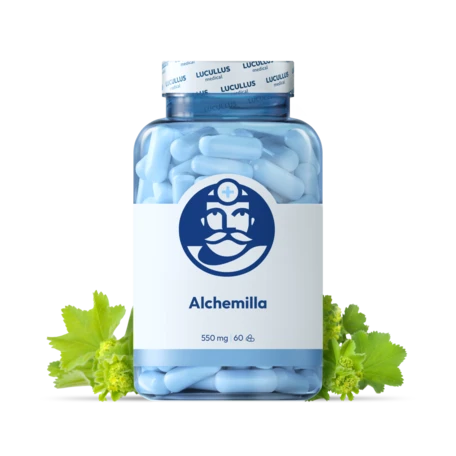
Histamine Control
Histamine is often perceived negatively, especially for its role in allergic reactions and intolerance. As with many things in life, black-and-white thinking is not suitable for this biogenic amine. As a neurotransmitter, it participates in many critical processes. In defending the body, for example, it supports the enlargement of blood vessels, making it easier for immune cells to access the site of inflammation. At the same time, it stimulates the production of gastric juices (essential for food processing), regulates the sleep cycle, controls appetite, and plays a role in learning, memory, and emotions. Histamine naturally occurs in the human body, and its balance is crucial for health. In the digestive system, it's broken down by the enzyme diamine oxidase. However, if histamine intake is greater than the body can break down, histamine intolerance develops. This imbalance can be caused by stress, poor lifestyle, medicines, or other factors. Excess histamine can lead to unpleasant symptoms, often resembling food allergies or digestive issues. It's essential to understand histamine as an important helper in our body.

Vitamin B3 Niacinamide
Vitamin B3 - niacin, perhaps the older ones also know it as vitamin P. It belongs to the group of B vitamins, which we find in the multiform B-complex. It is a very important group of vitamins that we necessarily need for the proper function of vision, mucous membranes, skin, heart... In the body, they are responsible for the production of energy in cells and are essential for the proper functioning of cardiac, muscle, and nerve activities.

Defining a fact: joint nutrition not only for those who have joint problems
Let's explore together the contents of this health-beneficial blend and how it works. It ensures better mobility, which is (far from) everything. Joint Pro improves a range of health specifications including inflammation, pain, stress resistance, and antioxidant capacity. The joint nutrition 𝒟𝓇. 𝐿𝓊𝒸𝓊𝓁𝓁𝓊𝓈 is created for prevention and is suitable for athletes (reduces weakness, load), seniors (addresses limited mobility - arthritis and arthrosis), persons after injuries (faster regeneration), people with overweight (strengthens joint resistance), youngsters (relieves stiffness, supports proper development).

Iron - the Elixir of Youth
Anyone who admires the muscular Arnold Schwarzenegger has surely seen the documentary Pumping Iron about his complex transformation from a skinny teenager to an absolute physical Olympian. His musculature is still admirable today. And it was ordinary iron that helped him achieve it. Of course, it's a joke; he mainly lifted iron. However, to make his muscles look like Hercules', he needed iron in a completely different form.

Surprisingly Resilient Maca - Peruvian Cress
This remarkable plant (Lepidium mayenii) from the Peruvian Andes, where it is grown at extreme altitudes (4000 m a.s.l.). It is incredibly resilient and can survive and grow in conditions where most other plant species would not survive, such as low temperatures, strong winds, and intense UV radiation. Its ability to adapt to harsh environments enriches it with nutrients and substances that positively impact the human body, enhancing resistance to both physical and mental stress.

Maca - Peruvian Ginseng
For ages, people have been trying to find miraculous herbs and mushrooms that would enhance health, cure deadly diseases, and boost male potency. Each culture has its proven aphrodisiacs. Here, oysters or chocolate are especially well-known. Recently, especially with the development of tourism, we gradually also learn about other invigorating means that people use often on the opposite side of the planet. One of the oldest substances for potency support is Maca Peruvian Watercress.






























